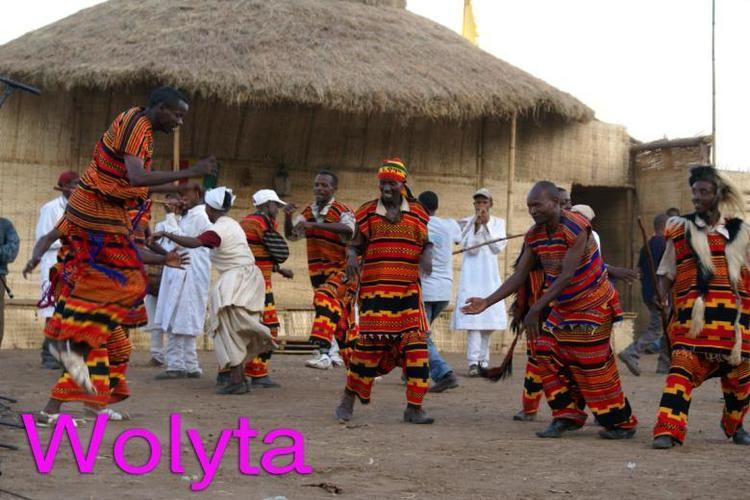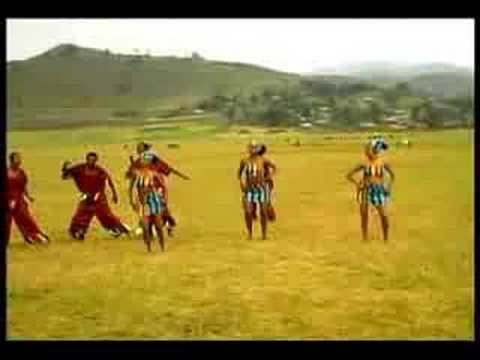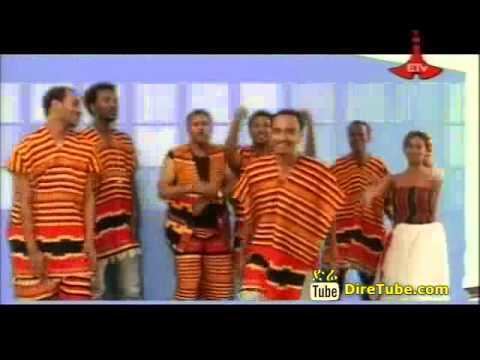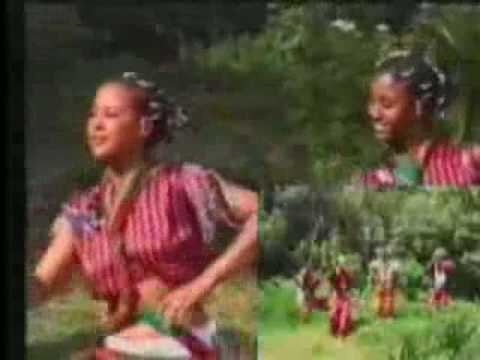Ethiopia 1,700,000 | ||
 | ||
Wolayta (also spelled Wolaitta) (Ethiopic: ወላይታ Wolaytta) is the name of an ethnic group and its former kingdom, located in southern Ethiopia. According to the most recent census (2007), the people of Wolayta number 1.7 million people or 2.31 percent of the country's population, of whom 289,707 are urban inhabitants. The language of the Wolayta people, similarly called Wolaytta, belongs to the Omotic branch of the Afro-Asiatic language family. Despite their small population, Wolayta people have widely influenced national music, dance and cuisine in Ethiopia.
Contents

History

The people of Wolayta had their own kingdom for hundreds of years with kings (called "Kawo") and a monarchical administration. The earlier name of the kingdom was allegedly "Damot" - this was said to include the south, south-east, south-west and part of the central region of present Ethiopia. The ruler was King (Kawo) Motolomi who is mentioned in the religious book Gedle Teklehaimanot, as an invader of the north and the king to whom was surrendered the mother of the Ethiopian saint, Tekle Haimanot (Tekla Haymanot). Some assume that Saint Tekle Haimanot was the son of this king. After the defeat which overcame the northern part of its territory the kingdom was reduced to its present size and the name became the Kingdom of Wolayta. It remained thus for hundreds of years until the expansion of Emperor Menelik II into the regions south of Shewa during the early 1890s. The war of conquest has been described by Bahru Zewde as "one of the bloodiest campaigns of the whole period of expansion", and Wolayta oral tradition holds that 118,000 Welayta and 90,000 Shewan troops died in the fighting. Kawo (King) Tona, the last king of Welayta, was defeated and Welayta conquered in 1896. Welayta was then incorporated into the Ethiopian Empire. However, Welayta had a form of self-administrative status and was ruled by Governors directly accountable to the king until the fall of Emperor Haile Selassie in 1974. The Derg afterwards restructured the country and included Welayta as a part of the province of Sidamo. The Welayta were previously known as "Wolamo", although this term is now considered derogatory.

In 1991 the Transitional Government of Ethiopia (TGE) restructured the country into ethnically-based Regions, and Welayta became the centre of Region 9. Later, Welayta was included in the Southern Nations, Nationalities, and People's Region (SNNPR, consisting of the former regions 7, 8, 9, 10 and 11) as part of the Semien Omo Zone. The regional government claimed that the Welayta were so closely related to the other Omotic-speaking peoples of that zone that there was no justification for a separate Welayta zone. Welayta leaders, however, stressed that their people had a distinct language and culture and demanded a zone for themselves. In 1998, the regional government attempted to introduce an artificially constructed language, based on the various local North Omotic languages and dialects, as the new language of education and administration for Semien Omo Zone. This triggered violent protests by Welayta students, teachers and civil servants, which led to the withdrawal of the new language. In November 2000, the Welayta Zone was established.
Wolayta language

Wolaytta is an Omotic language spoken in the Wolaita Zone and some parts of the Southern Nations, Nationalities, and People's Region of Ethiopia. The number of speakers of this language is estimated at 1,800,000 (1991 UBS); it is the native language of the Welayta people. There are conflicting claims about how widely Wolaytta is spoken. The 'Ethnologue' identifies one smaller dialect region: Zala. Some hold that Melo, Oyda, and Gamo-Gofa-Dawro are also dialects, but most authorities, including Ethnologue and ISO 639-3 now list these as separate languages. The different communities of speakers also recognize them as separate languages.

Wolaytta has existed in written form since the 1940s, when the Sudan Interior Mission first devised a system for writing it. The writing system was later revised by a team led by Dr. Bruce Adams. They finished the New Testament in 1981 and the entire Bible in 2002. It was one of the first languages the Derg selected for their literacy campaign (1979–1991). Welaytta pride in their written language led to a fiercely hostile response in 1998 when the Ethiopian government distributed textbooks written in Wegagoda – an artificial language based on amalgamating Wolaytta with several closely related languages. As a result, the textbooks in Wegagoda were withdrawn and teachers returned to ones in Wolaytta.
The Wolaytta people use many proverbs. A large collection of them was published in 1987 (Ethiopian calendar) by the Academy of Ethiopian Languages. Fikre Alemayehu's 2012 MA thesis from Addis Ababa University provides an analysis of Wolaytta proverbs and their functions.
Wolayta music
Wolayta music plays a prominent role in national entertainment in Ethiopia. The unique and fast-paced Wolayta tunes have influenced several styles and rhythm as it continues to shape the identity of Ethiopian musical diversity. Various famous Ethiopian artists from other ethnic groups have incorporated Wolayta musical style into their songs, including vocalists Tibebu Workeye and Tsehaye Yohannes. Just as influential are Wolayta traditional dance forms that are often adopted by musicians and widely visible in Ethiopian music videos.
